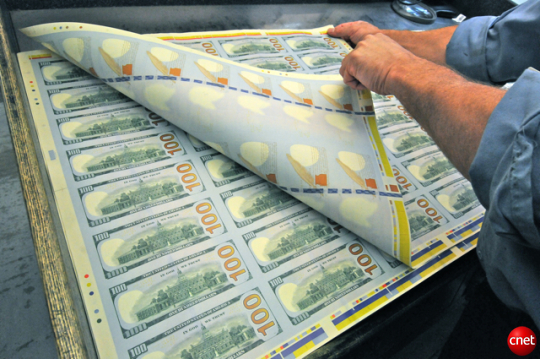
Even though I have been to this facility and seen the production process for U.S banknotes in person, (and I'll be going there in the Fall to pick up our test-batch of the new $100 bills), I still found this article on CNET fascinating!
CNET reporter Daniel Terdiman got behind-the-scenes at the Bureau of Engraving and Printing's Washington, D.C., production line of the brand-new, next-generation $100 bill. In the article, he reviews in photos, text and video the complex, week-long process of producing a new $100.
Equally interesting to me were the comments following the article. Aside from the usual comments about how we should have a gold-backed currency, the pending hyperinflation, the $100 bill not being worth the paper it was printed on, etc, I also saw some astute comments from people who continue to marvel, as do I, that the U.S. refuses to pull older banknotes from circulation.
The general thread of those discussions was - who cares if the Fed puts out a new super-counterfeit-proof $100 bill if you can continue to produce counterfeit versions of the previous note and use them as legal tender? It's a mystery to me and always has been. Practically every other country on the planet removes existing notes from circulation when a new note is released.
We receive calls all the time from people asking "how do I verify a 1982 $100 bill?", and all we can tell them is - you can't! Not really. Any U.S. dollars printed prior to 1983 are pretty much unsecured documents.
Good to see serious steps taken with this note, at least.


